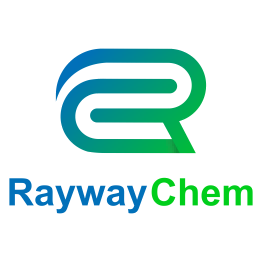Medical latex products include medical gloves, medical products on latex silk or latex tape, medical rubber plugs, medical latex tubes, etc. 72% of medical gloves are nitrile and latex gloves, and the global annual demand for nitrile and latex gloves in more than 200 billion. Nitrile gloves have the advantages of avoiding Latex allergy, good elasticity, stable supply of raw materials, etc. The proportion of use in the medical field has gradually increased. Latex and nitrile gloves account for 72% of disposable medical gloves and are characterised by good elasticity, abrasion and puncture resistance. The accelerators ZDEC (ZDC, EZ), ZDBC (BZ), and ZMBT (MZ) are the common raw materials for medical latex products, but also the rubber auxiliaries used in medical latex products are large amounts of products.
Introduction of common accelerators
(1) Product development
As one of the commonly used raw materials in medical latex products, accelerators ZDEC, ZDBC and ZMBT have benefited from the rapid development of medical latex products and have gradually increased in volume since 2003. Through the continuous optimization of our RAYWAYCHEM factory, we have achieved complete substitution of foreign products for use, and now the quality of our products has been recognized by customers in China and abroad.
(2)Product information
It is a typical representative of dithiocarbamates. Although it has a low critical temperature for vulcanisation, is prone to scorching and is less active than the accelerator PZ when used alone, it has improved operational safety. The vulcanisation speed is very fast at 120-135°C. The vulcanisation temperature rises, the flatness of the vulcanisation becomes narrower and it is easy to produce over-sulphur, so the vulcanisation temperature should not exceed 125°C. Adding a small amount of TMTD, DM, anti-coke agent or MB can improve the storage performance of the rubber and delay the start of vulcanisation. If used with ammonium dithiocarbamate or amine accelerators, the vulcanisation speed can be greatly increased.
ZDEC is a good activator for thiazole and sulfenamide accelerators. It has a strong activating effect on butyl rubber containing accelerators MBT, TMTD or M and TMTD and can be used for EPDM rubber, but the activating effect is not as strong as for butyl rubber. It is generally used with water-soluble accelerators (ammonium or sodium salts of dithiocarbamate) or with other water-insoluble accelerators (other zinc salts of dithiocarbamate) to increase the speed of vulcanisation. When used as a second accelerator for thiazole accelerators in latex, the resulting product has good ageing properties and is suitable for white or bright-coloured products and transparent products. It is mainly used in the manufacture of latex products, but can also be used in the manufacture of medical products, adhesive tape and self-sulphur products. The general dosage is 0.1 to 1 part in the dry rubber material and 0.5 to 1 part in the latex material.
- RAYWAY Rubber Accelerator ZDBC(BZ), (Zinc Dibutyldithiocarbamate, CAS No. 136-23-2).
ZDBC is a super accelerator for natural rubber, synthetic rubber and latex. Its dry rubber and latex properties are similar to those of the accelerator ZDC, but with greater activity. Vulcanisation flatness is medium below 100°C and narrow above 120°C. The most suitable vulcanisation temperature is 95-110°C. Due to its high solubility in organic solvents, it is often used in low-temperature vulcanisation pastes. The latex containing this product can be used for a week without early vulcanisation. Zinc oxide and sulphur are used in general quantities and it is all right whether they use fatty acids or not. However, in both dry types of rubber and latex, zinc oxide should not be used as an activator if high-transparency products are to be produced. It is usually used as a secondary accelerator in dry rubbers and is a good active agent for thiazole accelerators. It is an anti-ageing agent in compounding and improves the ageing resistance of vulcanised rubber. It is non-discolouring, non-polluting and easy to disperse. The dosage is 0.5~2 parts according to the requirements of tensile stress, transparency and other properties of the vulcanised rubber.
ZMBT is a high-speed vulcanisation accelerator with no rubber colouring properties. It is suitable for use in NR, IR, BR, SBR, NBR, EPDM and latex. When used in dry rubber it has the same properties as MBT with low scorch. Mildly active in latex systems and often used in combination with super accelerators. High critical vulcanisation temperature (138°C). Not susceptible to early vulcanisation and has a wide flatness of vulcanisation. Suitable for latex systems and has the function of regulating the viscosity of the system. Suitable for injection moulding and foam rubber products. Safe to handle, easy to disperse, no pollution, no discolouration. Ageing resistance when used in combination with accelerator TP. Mainly used in the manufacture of tyres, hoses, shoes, rubber cloth and other general industrial products.


